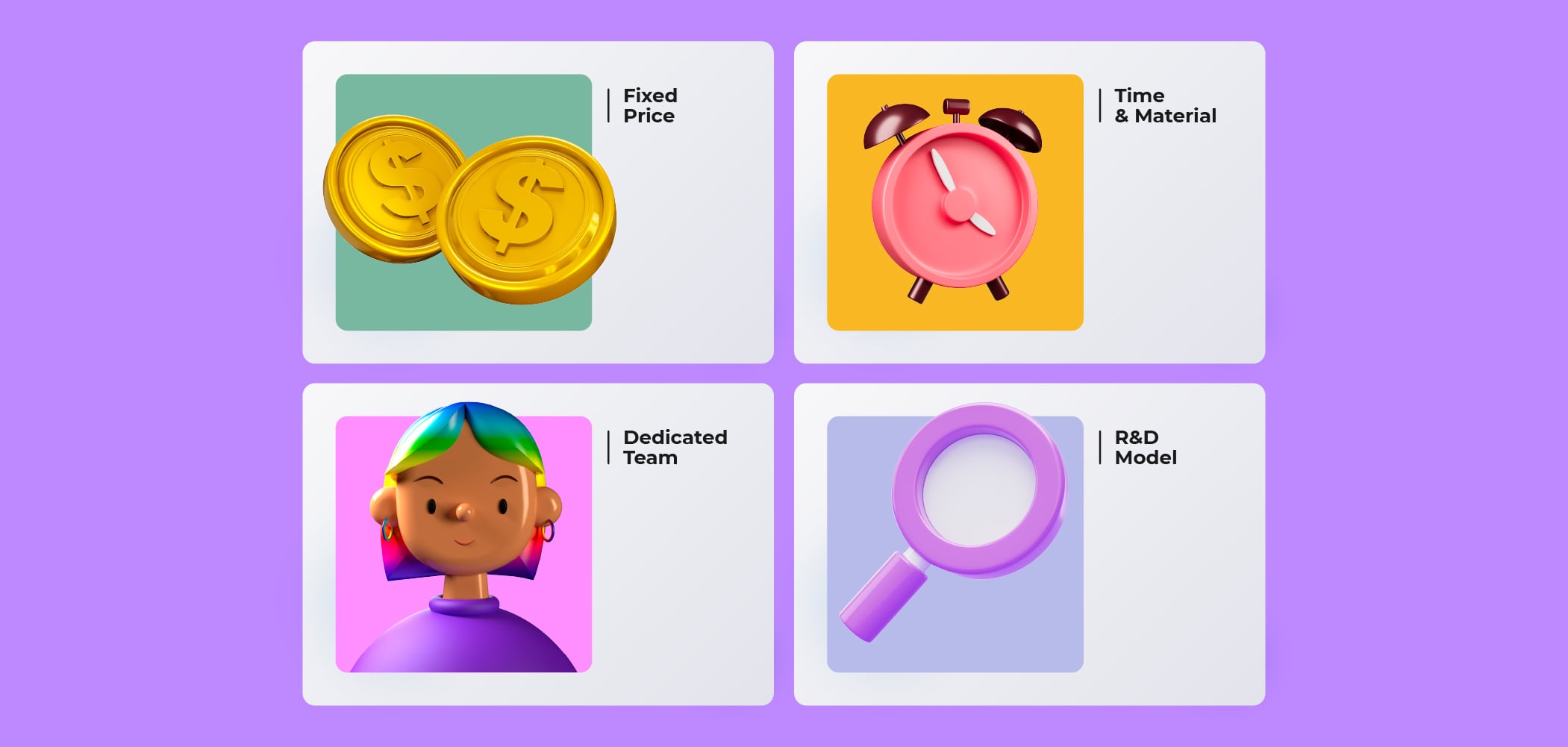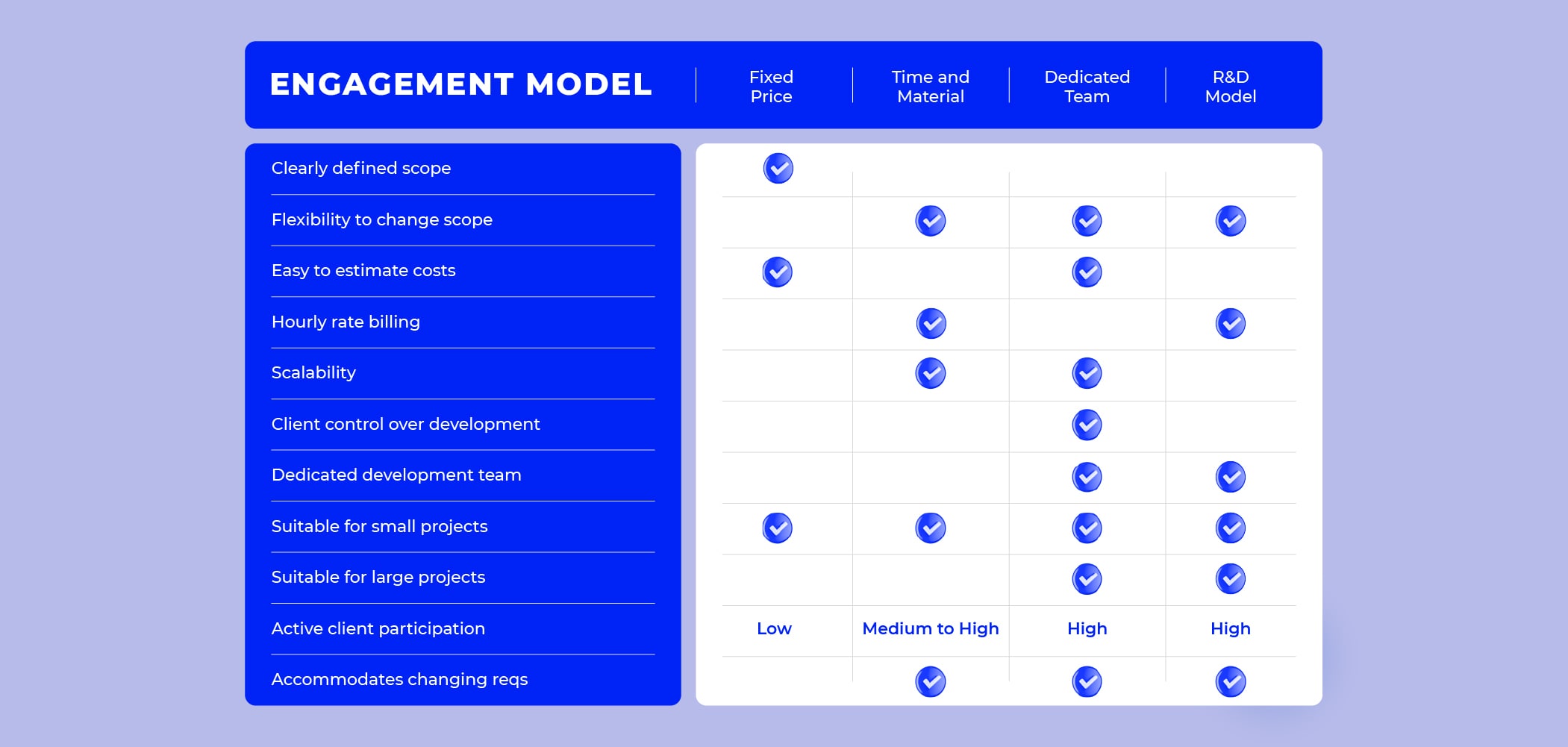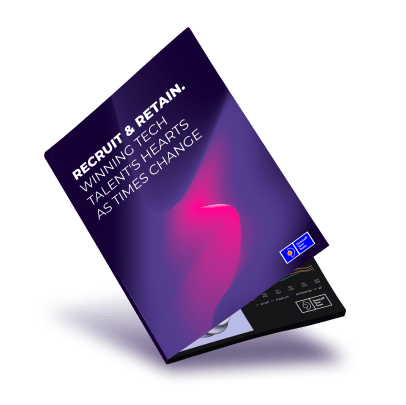Table of Contents
- What Exactly is an IT Engagement Model?
- Partner Engagement Model Types
- The Right Way to Adopt an IT Engagement Model
- 4 IT Engagement Models to Accelerate Growth: Examples
- The Advantages of IT Engagement Models that Give Your Business an Edge
- What Engagement Model Works Best for Us: The Outstaff Your Team Story
- FAQ
Why do most companies outsource their talent? Surely, to have access to a broad talent pool that is unavailable in-house. However, 26% of companies do so to get some professional expertise and improve their efficiency, first and foremost. It’s a proven way of making the project go faster and smoother.
In a perfect world, exactly that would happen, but in reality, 16% of outsourced projects fail due to poor communication. There are ways to prevent setbacks and rise above the turbulent waters of today’s IT market: thought-through engagement models to help you assess your project and use all the team’s potential, avoiding all the pitfalls.
What Exactly is an IT Engagement Model?
An IT engagement model is a framework that describes how a company collaborates with a technology partner or service provider to satisfy its needs. It specifies the scope of work, deadlines for completion, pricing, and project management methods. Different approaches can be customized to fit the specific needs and goals of a company.
Partner Engagement Model Types

Understanding the various engagement models available is critical whether you are a client searching for IT services or a service provider looking to offer your skills. Let's look at some of the most common IT engagement models in more detail.
The Fixed Price approach is suited for small to medium-sized projects with a well-defined scope of work and a set budget. Businesses benefit from predictability and cost certainty with the fixed price model, but it may not be appropriate for projects that are subject to change.
The Time & Material is used when the service provider charges the client based on the time and materials actually used to complete a project. This model is suited for projects with a dynamic scope of work that is adjustable. The time & material approach gives companies more flexibility, but it can lead to cost overruns if not effectively managed.
The Dedicated Team model is an answer to the question of “how to scale tech teams''. The IT staff augmentation services provider supplies a team of developers, designers, and project managers to work on a project. The dedicated team model gives organizations more control and flexibility, but it may not be practical for businesses that require company data to be kept in-house. For example, if a corporation needs to design a new software system that relies on proprietary algorithms or customer data, it may not want to share sensitive business information with an external team. In this case, the company may need to keep the development process in-house or employ a different engagement model.
The R&D engagement model is one in which the service provider collaborates closely with the client to create new products, systems, or software. This approach is suitable for firms that wish to use technology to develop new solutions that meet their specific requirements. The R&D approach gives firms access to specialized skills and knowledge, but it may not be appropriate for businesses with a limited budget.

The Right Way to Adopt an IT Engagement Model
Implementing the right business engagement model can lead to better collaboration, which in turn brings a 50% efficiency boost to the workplace. However, it's important to select a model that aligns with the project's specific requirements and goals. There are numerous phases to adopting an IT engagement model. These are the stages:
Step 1. Determine Your Business Needs
The first step in implementing an IT engagement model is to establish your business needs. You must comprehend the challenges you are attempting to tackle, the desired outcomes, and the resources at your disposal.
Step 2. Assess Different IT Engagement Models
Consider the project’s scope, budget, timeframe, and the level of control and flexibility you require.
Step 3. Choose a Perfect Partner
Next, you should search for a partner with refined industry knowledge, a strong reputation, and a track record of completing projects on time and on budget.
Step 4. Establish an Agreement
You'll need to create an engagement model agreement outlining the scope of work, project dates, pricing, and project management technique. This agreement should be specific.
Step 5. Carry out the Project
Setting up the project team, formulating project plans, and assigning tasks and duties to team members are all part of this step. To guarantee that the project runs successfully, you need also to establish communication protocols and project management methods.
Step 6. Track Progress
To identify possible difficulties and take remedial action, you should monitor key performance indicators (KPIs) such as project timeline, budget, and quality.
Step 7. Evaluate Success
You should perform a post-project assessment to evaluate the project's strong points and recommend areas for improvement. (Task automation, implementation of some cutting-edge popular IDEs, etc.) You should also make certain that all project milestones have been met and that the development team has been fairly compensated.
4 IT Engagement Models to Accelerate Growth: Examples
Let's look at some IT engagement model examples used during tech teams augmentation and in other cases.
Fixed Price: Say, a software development firm offers to build a new e-commerce website for a client for $50,000. The project's scope of work is well-defined, and the client has a set budget.
Time and Material: Imagine, that a mobile app development company offers to create a new mobile app for a client and charges the client depending on the time and materials spent on the project. The project's scope for the project is dynamic and subject to change.
Dedicated Team: In this case, a hypothetical tech consulting firm assigns a dedicated team of developers, designers, and project managers to work on a client's software development project. The project will span 12 months, and the client will require continuous support and development.
R&D: Imagine a US company that sets up their R&D center in India under their own brand, hiring a team of local engineers who work independently on product development. Their team in India is in direct communication with Tech headquarters in the US, ensuring that the product development is aligned with the company's goals.
These IT engagement model examples should shed light on the business benefits a company gains just by implementing a right approach to their partner relationships.
The Advantages of IT Engagement Models that Give Your Business an Edge

IT engagement models clarify roles, duties, and expectations. They can be short-term project-based or long-term strategic partnerships. Any engagement approach relies on both parties' capacity to collaborate and build trust, transparency, and shared goals.
Cost Management
A well-chosen IT business partner engagement model can offer greater cost control and transparency to enterprises. Businesses can better manage their IT costs by agreeing on a set fee or a time and material rate.
Flexibility
IT engagement models make enterprises more flexible, allowing them to adjust to shifting market needs and conditions.
Access to High Tech Skills
IT engagement models give corporations access to specific skills and experience that you might not have in-house.
Risk Reduction
Different types of IT engagement models can assist businesses in lowering risk by increasing predictability, accountability, and control over IT initiatives.
All in all, IT engagement models are a must-have tool for companies trying to harness technology to meet their goals.
What Engagement Model Works Best for Us: The Outstaff Your Team Story
Over the years, we have found that the dedicated team approach is an effective model for long term projects. Hiring and scaling a skilled tech team can be time-consuming, which is why we offer access to a team of experts, optimize the cost of hire and time spent on scaling teams and HR Ops.
When it comes to building awesome products, we know that having a remote team can be a game-changer. That's why we offer dedicated teams who work directly with our clients — no middlemen involved. We're talking direct access to Slack, Jira, GIT, and everything else they use.
We also match time zones, so there's no more 2am calls (unless you're into that sort of thing). Plus, our clients get to use their own product development methodology, because let's face it — you know what works best for your business.
And because communication is key, we have a system of milestone talks to make sure everyone's on the same page. That way, we can ensure that our clients get the most out of their dedicated team, without having to worry about retention.
So, if you're looking for a team that works seamlessly with yours and delivers great results, look no further. Our dedicated teams are here to help you make your product dreams a reality!
FAQ
-
What is engagement in IT industry
Effective collaboration model ensures that IT service providers deliver high-quality products and services, meet deadlines, and demonstrate excellent communication skills throughout the project.
-
What are engagement models in software development?
In software development, engagement models are frameworks that define how IT service providers and clients work together. They provide a structure for communication and resource allocation.
-
What is the most popular IT business partner engagement model?
In the IT industry, two popular business partner engagement model types are the time and material model and the dedicated team model. The time and material model allows clients to pay for the work completed, while the dedicated team involves hiring a dedicated team of IT professionals for long-term projects.
Stay in tune
Curated Tech HR buzz delivered to your inbox



